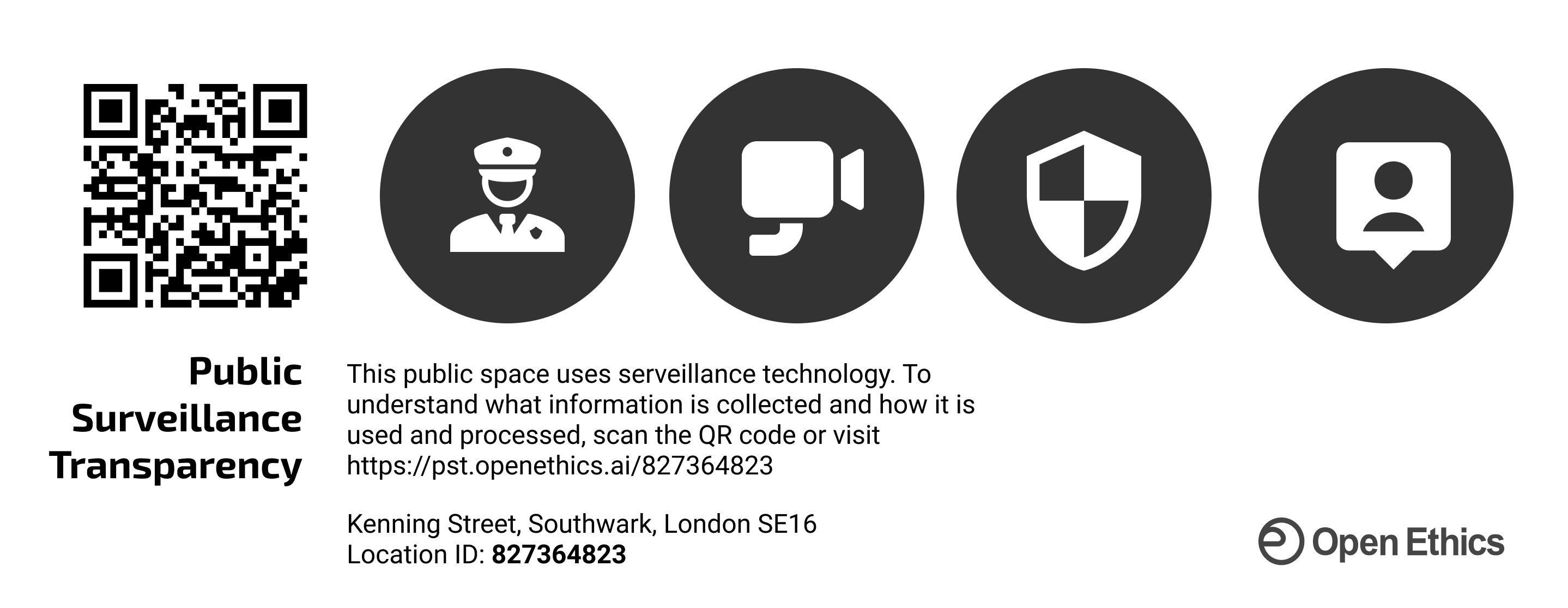Public Surveillance Transparency Project
We believe that public safety is important. However, safety shouldn’t be used as an excuse for unlimited surveillance, unlawful access to private data, and deterioration of privacy as a human right. We believe that transparency can serve as the middle ground. We suggest instruments to enable transparency in the case of public surveillance.
Public Surveillance Transparency Project concerns oversight and transparency of surveillance processes put in place at a given physical location. We refer to each of these locations as to Public Surveillance Location (or PSL). PSL can have public or private ownership and can have different technological capacities.
Contact Open Ethics for a Pilot Project

Use case for Public Surveillance Transparency
The municipality of X has requested to set up surveillance using CCTV camera in the public square for safety purposes. They have ordered private company Y to develop and deploy the solution. Once the solution is deployed, transparency labels are placed in the location. Citizens passing by can see the transparency labels and scan QR code from the label to understand who, why, and how collects and processes the surveillance data.
How Public Surveillance Transparency works

- Citizen is in the public space
- Citizen scans the QR code of on the transparency label placed by surveillance owner
- Citizen reads the disclosure on the dedicated page which is specific to the location linked to the PSL
- Citizens can provide feedback to the data protection authority as well as to the PSL owner
Principles for Transparent Public Surveillance
By offering this list of 5 principles, we intend to provide practical guidance for those who advocate for public surveillance transparency and oversight, seek further input for discussions and policy design. These guidelines are based on existing literature and existing policy documents.
- Principle 1: Each PSL should be subject to public disclosure and oversight.
- Principle 2: Oversight bodies, civil society, and individuals should be able to receive and access information about PSL at any time.
- Principle 3: The oversight of the PSL should be independent.
- Principle 4: Disclosure should take place before the PSL installation.
- Principle 5: PSL owners should be able to publish aggregate information on surveillance orders they receive.
Sticker Example for Transparent Public Surveillance Location
Example of the Transparent Public Surveillance Location: a video camera set up at a bus stop.

Disclosure Elements for Public Surveillance Location
Disclosure for the Public Surveillance Location follows and extends the Open Ethics Label scheme and the Open Ethics Transparency Protocol.
The system is considered “disclosure-complete” when all the required elements are present in the disclosure.
| Element | Required | Description | Disclosure |
|---|---|---|---|
| Owner | required | provide information about owner and controller of the system | public |
| Contact Details | required | contact for oversight and feedback | public |
| Scope | required | describe why PSL is needed at the place and who benefits from the installation | public |
| Location | required | human and machine-readable | public |
| Data Disclosure | required | data collection and data labeling practices, or approach to heuristic in case if not using trained models for decision-making | public |
| Personal Data | required | describe personal data collection, retention, and processing practices | public |
| Decision Space | required | describe types of decisions/outputs the system generates | public |
| Components | required | describe the use of the 3rd party algorithmic and data components of the Location, if any | public |
| Technology | required | describe the use of data collection technologies (audio, video, infrared, sensors, etc) | private, public |
| HITL | optional | provide description of Human-in-the-loop configuration, if any | public |
| Incidents | optional | provide access to public incident database | public |
| Algorithmic Disclosure | optional | describe choices made for development and for the use of existing code libraries | private, public |
| Training Set | optional | provide access to the training dataset | private, public |
| Codebase | optional | provide access to the source code | private, public |
Contact Open Ethics for a Pilot Project
A successful pilot project has well-defined start and finish dates, as well as established success metrics. These objectives should be in line with the scope of your organization or a community. They will guide your next steps after the pilot is completed. You should also make sure that the right stakeholders are involved for the life cycle of the project.
Please give us more details about your use-case or a situation. Describe your objectives and a timeline for a pilot.
Photo by Andrew Scullin on Unsplash
